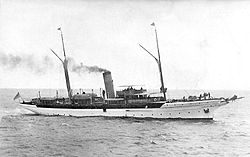Critical response
On the review aggregator website Rotten Tomatoes, the film has a score of 76% based on 128 reviews, with an average rating of 6.6/10. The website's critics consensus reads: "The Cat's Meow is a deliciously evoked period piece and whodunit." [14] Metacritic , which uses a weighted average , assigned the film a score of 63 out of 100, based on 34 critics, indicating "generally favorable" reviews. [15]
New York Times film critic A. O. Scott called the film "a modest, restrained picture, as small and satisfying as one of Woody Allen's better recent efforts. There is little to distinguish it visually from a made-for-cable historical drama. We observe the events from a polite distance, rather than being plunged into the swirl of decadent Jazz Age high life. The suave camera movements never quite dispel the feeling that we are watching a filmed play. But Mr. Bogdanovich … shows his mastery in his work with the actors, who turn dusty Tinseltown lore into a spry and touching entertainment." [16]
"Apart from its theory about the mistaken death of Ince and its cover-up, the movie's most intriguing theory is that Parsons witnessed it, which might explain her lifetime contract with the Hearst papers," wrote Roger Ebert of the Chicago Sun-Times . "The film is darkly atmospheric, with Herrmann quietly suggesting the sadness and obsession beneath Hearst's forced avuncular chortles. Dunst is as good, in her way, as Dorothy Comingore in Citizen Kane in showing a woman who is more loyal and affectionate than her lover deserves." [17]
"In some ways, Dunst gives the film’s most impressive performance," wrote Jonathan Rosenbaum, who called the film a must-see. "What’s masterful about Bogdanovich’s direction is the cumulative detail, which adds complexity to incidental as well as central characters. He has a graceful way of switching viewpoints from one character to another and an uninsistent yet mainly persuasive sense of period. … This picture might well be considered a more impressive accomplishment than many of his early pictures. But it speaks with a quieter voice, and what it says seems substantially more personal and thoughtful." [5]
In the San Francisco Chronicle , Mick LaSalle stated: "Bogdanovich takes a tale of old Hollywood and infuses it with velocity and enthusiasm. He avoids his twin demons, freneticism and cuteness, and delivers his best picture in years ... His deft use of a single location, his intelligent handling of his ensemble cast and his graceful camera work mark this as a true return to form." [18]
Derek Elley of Variety described the film as "playful and sporty … Dunst gives her best performance to date amid a skilled older cast. Believable as both a spoiled ingenue and a lover to two very different men, Dunst endows a potentially lightweight character with considerable depth and sympathy." [19]
"Elegant, funny and unexpectedly touching, this whodunit about a murder aboard the yacht of William Randolph Hearst represents a bracing comeback for Peter Bogdanovich," wrote Rolling Stone film critic Peter Travers. "Dunst, the teen queen of Bring It On and Crazy/Beautiful , is showstoppingly good, finding humor, heart and surprising gravity in a character often dismissed as a gold digger." [20]
James Christopher of The Times wrote: "The unexpected charm of Bogdanovich's film is that he paints a social scenario worthy of Decline and Fall . His cast are comically hollow and effortlessly insincere … Kirsten Dunst is a marvellous tease as Marion; Eddie Izzard is a manly Chaplin; and Herrmann is hypnotic as the infatuated host who is richer than God." [21]
In the Los Angeles Times , Kevin Thomas stated: "Peter Bogdanovich, who knows his Hollywood history probably better than any other American director, works from Steven Peros' amusing yet poignant script to tell the popular version of the legend in clever and entertaining fashion, loaded with authentic and convincing details." [22]
"What a tonic to be treated to a movie for that most uncourted, ignored and generally dissed of demographics: the grown-ups," wrote Ann Hornaday of The Washington Post . "Based on an urban legend that has been quietly circulating around Hollywood for almost four decades, The Cat's Meow would be grounds for libel if the libeled one were still alive … Bogdanovich directs The Cat's Meow with unfussy clarity, introducing a crowded cast of characters with quick scenes that immediately convey who they are and what they're up to. In the 1970s films The Last Picture Show and Paper Moon , Bogdanovich coaxed some wonderful performances from his actors, and he clearly hasn't lost that touch: Herrmann inhabits Hearst completely (he even bears an uncanny physical resemblance to the late publisher). Dunst, heretofore relegated to kittenish teen roles, comes as close to capturing Davies' effervescence and spontaneity as anyone has (and no one has). Izzard is also very good as Chaplin." [23]
"Bogdanovich's silent crosscutting between close-ups of the characters helps to shorn the film of its theatrical origins," wrote Peter Tonguette in The Film Journal. "Bogdanovich's sensitivity towards his characters and outright insistence that we see even the most gluttonous and poisonous among them as human beings is rare, and commendable, indeed." [24]
Filmink called it "a lovely little movie. Nicely written, full of perfect performances and affection for its characters. Better than Mank, which covers some of the same ground." [25]

